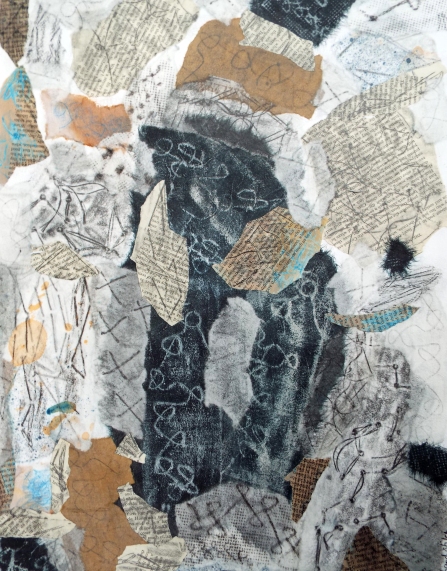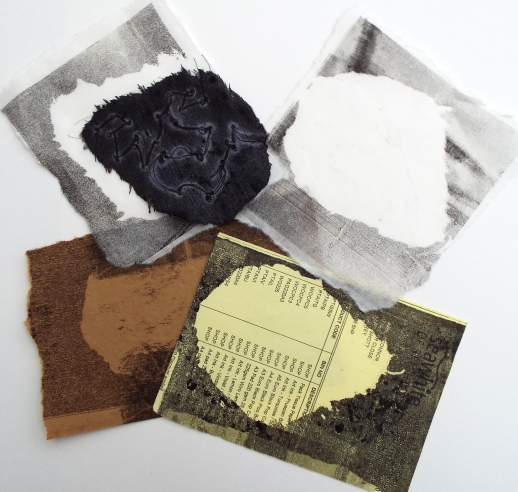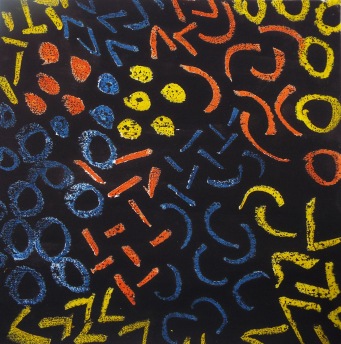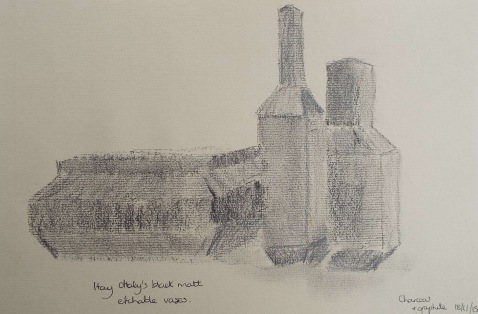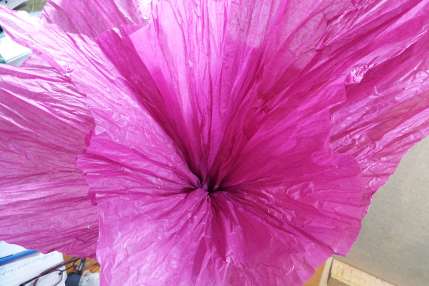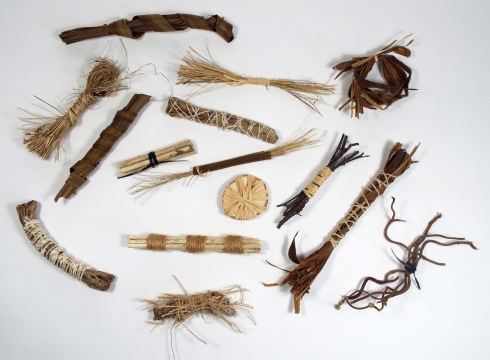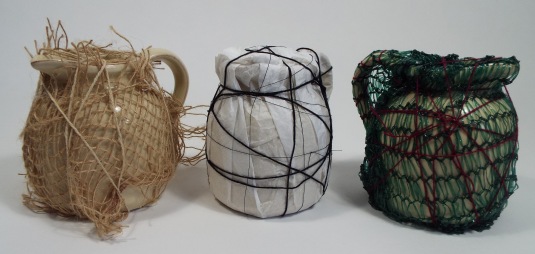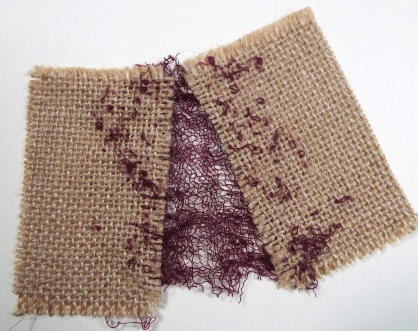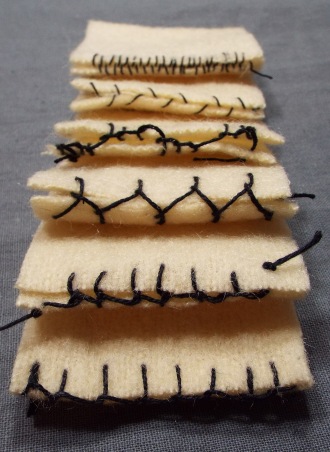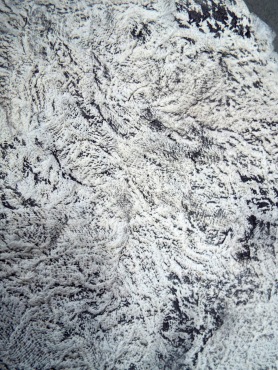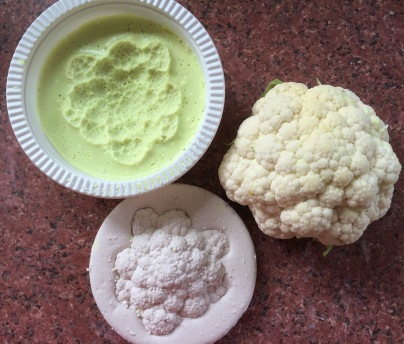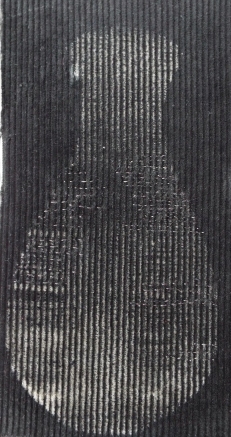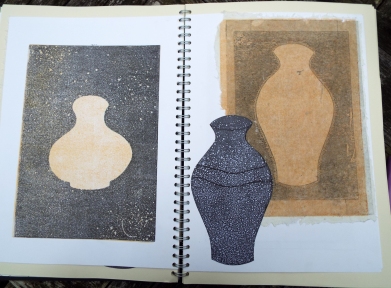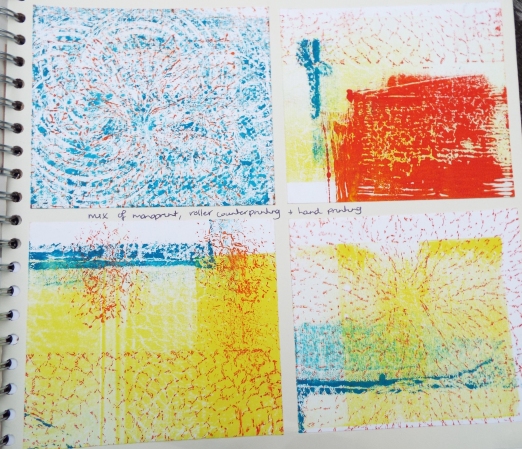I was excited to begin hand stitch samples to print with and was soon enthused with the results of some rubbings taken to explore the potential of the stitched marks.
Starting with chain stitch, which was deliberately loose and unconventional for a more expressive outcome, I was encouraged by the potential from a few small lines of quite uninspiring stitch.
In this first rubbing on some 160gsm cartridge paper, the seed pod-like rubbings of large
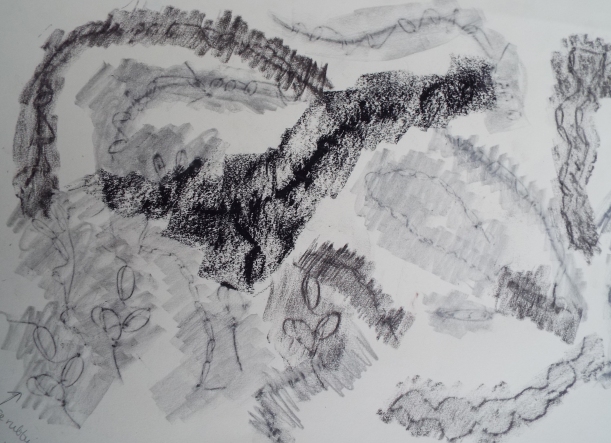
loose chain stitch in the bottom left were particularly appealing, but once a variety of papers were tested , there was no holding back. I found that fine papers give beautifully, delicate, detailed rubbings. Printed 9g lens tissue, tea bag paper and chappra tissue melt into the page when adhered with acrylic wax or soft matte gel.
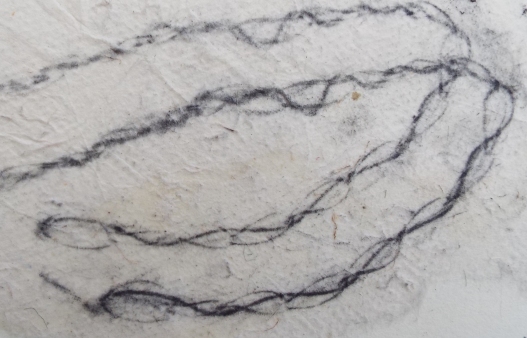
Soft gloss gel works well too, but the matt finish is more appealing in this context, somehow enhancing the delicacy of the stitch and thread and residue of graphite. HB graphite sticks gave a crisper, cleaner rubbing than the softer 2B stick, but a combination of hardness & softness increased the variety of marks. Rubbing, non-dominant hand drawing, stitching onto tracing paper and layering the results also has potential,
as does rubbing, adding stitch and a watersoluble ink wash. The loosely stitched black linen acted as a mask to the wash, creating faint white stitch marks, both the stitch and white outline contrast with the different values of graphite. There is also an appeal in the simplicity of sticking to the one stitch, echoing the line and the limited palette.
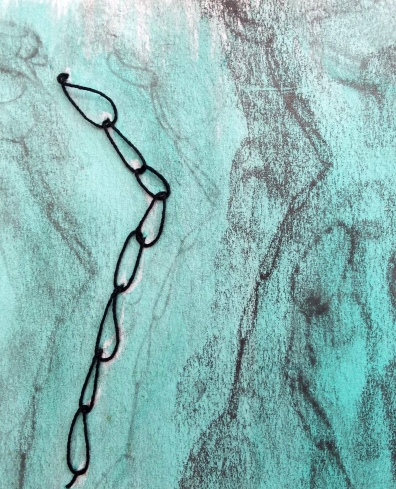
Different scraps of paper and fabric were stitched with a variety of threads and as mentioned earlier I got quite carried away in the excitement and produced lots of small samples which were then collaged with Golden soft gel (gloss).
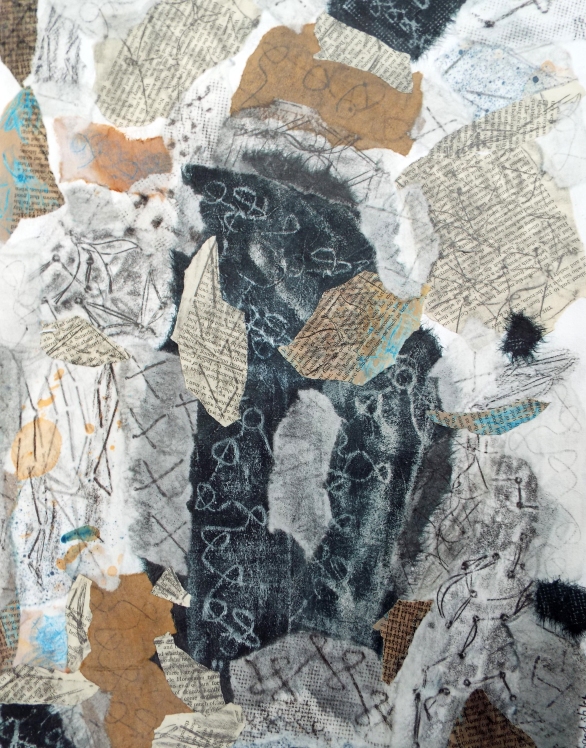
The results were inspiring, but I could see that some areas worked better than others and cut some windows in my sketchbook to frame the more successful combinations.
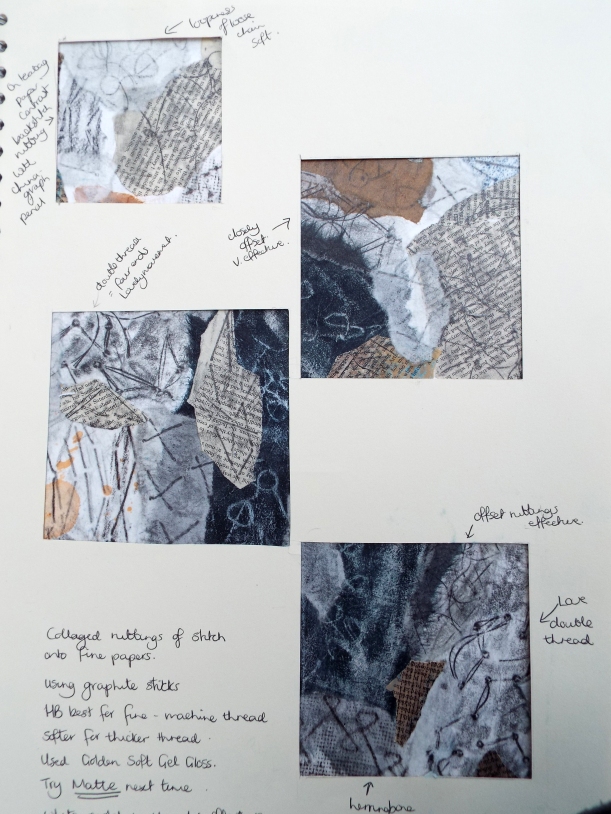
The stitch samples were small and included french knots, straight, herringbone and cross stitch on paper, fabric and nylon netting and were rubbed from all directions on a variety of papers, repeating and overlaying the impressions using graphite, white oil and soft pastel. The greys, brown’s and blacks with a touch of blue and spot of orange were pleasing and the marks expressive, making me feel quite emotional. The detail achieved with rubbing was intoxicating,. The rubbing, and hopefully the printing, reveals the back of the stitch as well as the top which adds to the expression. Using double thread on the french knots produced lovely marks, bottom right above. The backstitch created more graphic diamond like shapes contrasting with the soft rounded chain stitch and the looser crooked crosses. The clean line of the waxed linen thread differs from the visual texture of the hairier linen. The text of the old book pages has similarities with the nylon mesh which together with the speckled tissue create some harmony.
Returning to the original plan of printing from the stitch samples, rather than rubbing, various papers and techniques were explored:
Combining positive and negative, first and ghost prints, tearing or cutting the edges all added to the interest with numerous possibilities and outcomes from each stitch sample.
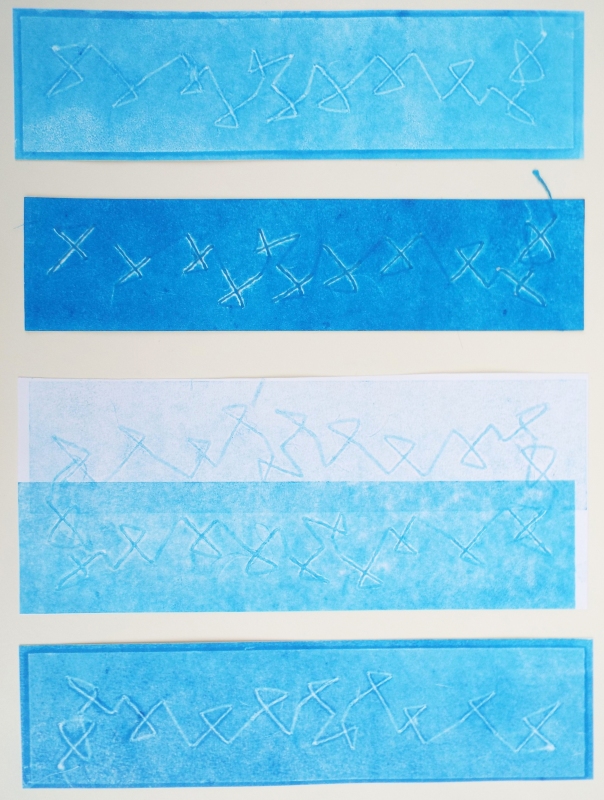
I thought about the marks of Cy Twombly, creating a monoprint
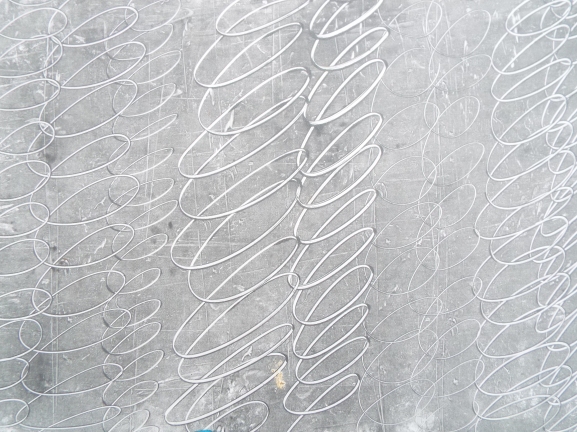
then couched some hemp thread onto calico, which acted as a mask on the inked original, with graphic results. The texture of the calico and multi stranded thread creating a lovely detailed print below.
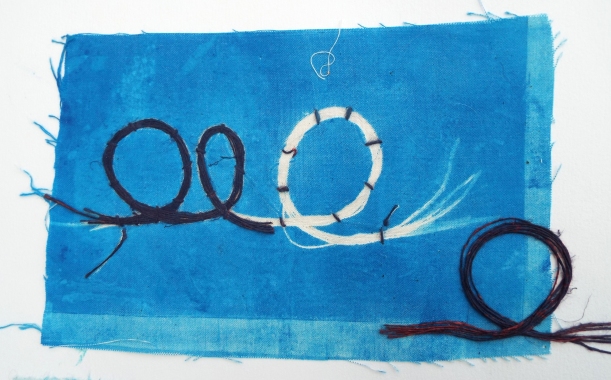
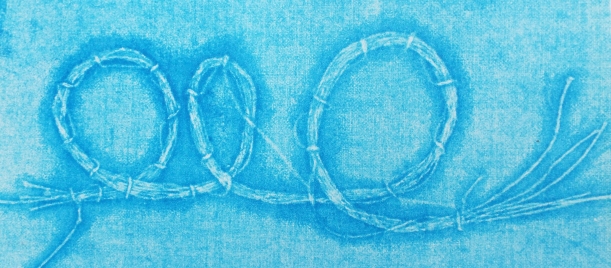
Continuing to explore similar marks, inspired by a piece Emily Barletta’s work
the following was stitched with different threads onto heavy stabliliser with quite an appealing serendipitous or perhaps, subconscious, palette choice.
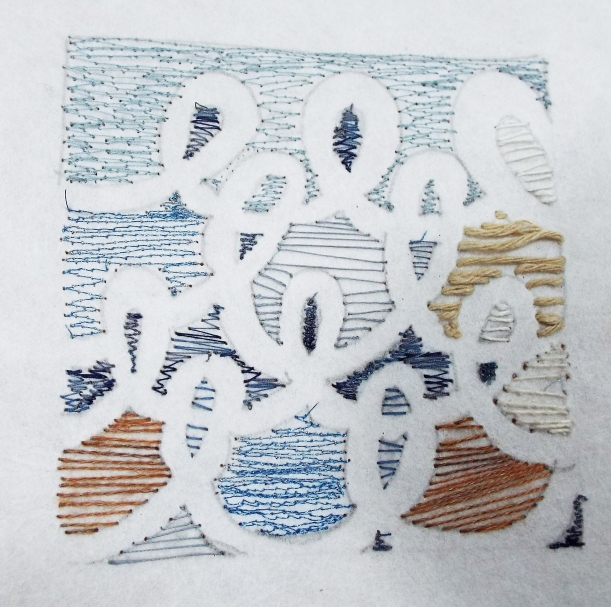
The print results were delicate but not as successful as hoped. Part of the appeal of Emily Barletta’s piece were the holes created by the needle piercing the paper and the shapes created by stitching the negative space. Although evident in the above sample the ‘holes’ and Cy Twombly-esque marks were lost in the print. The stabiliser absorbed ink and printed an interesting texture but this detracted a little from the delicacy of the printed stitched marks.
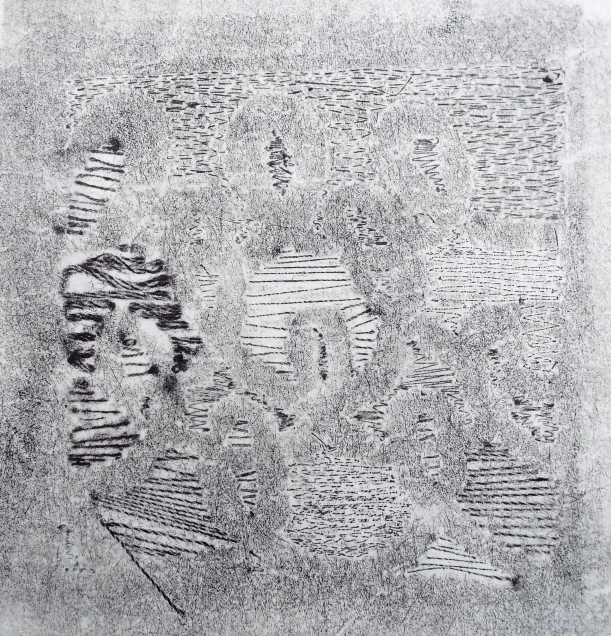
Lari Washburn inspired the french knot samples and a machined version later.
French knots on silk produced a lovely watery background, middle below, and a clear print from calico on the left:
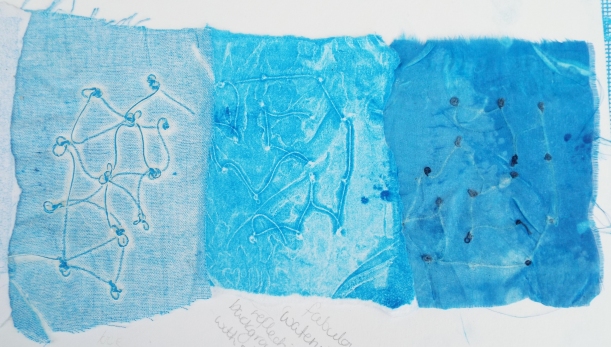
Feeling buoyed by my exploration, I need to focus, where can I take this? Whilst the prints are interesting, they don’t stand alone in the context of a final piece and it was printing onto fine papers, combining print techniques and mark, perhaps layering or offsetting that fuelled the excitement.
















